#sensoryprocessing
Explore tagged Tumblr posts
Text
Hello. I’m struggling. 3/3
The pillars
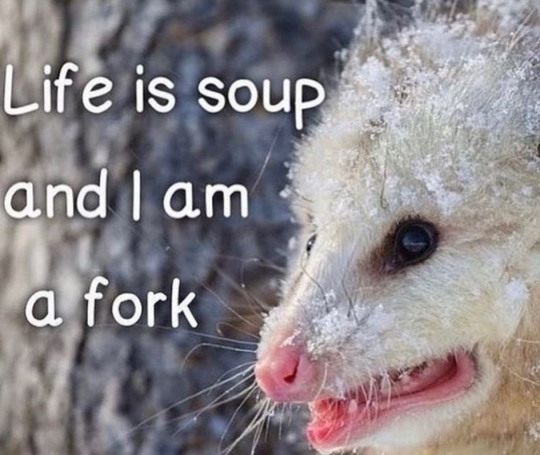
These are the pillars adults with AuDHD often go undiagnosed on because everyone just stares at behaviors without asking how it feels. And I feel. A lot. Maybe even too much. The craziest part is this was always there, I just rationalized it. I also rationalized my multiple sclerosis symptoms until motor problems became obvious. It’s the same thing here — this tears me apart inside but doesn’t degrade my nervous system (SM is treatable, neuroatypicality is about learning to live your own way). And the best part? I’m still invisible. When I bring it up, I get told “You can’t have autism because it doesn’t show on you.” Of course it doesn’t! I learned to hide it well, and after 25 years, burnout hits — mistaken for depression. Thanks for listening. I’ll go suffer with myself some more. Goodbye.

#AuDHD#Neurodivergent#AutismAwareness#ADHDAwareness#MentalHealthJourney#Neuroatypical#AdultAutism#Masking#SensoryProcessing#EmotionalRegulation#Neurodiversity#TherapyJourney#SelfDiscovery#InvisibleDisability#MentalHealthMatters#artists on tumblr#art#cartoon#esey#writting#writing stuff#just writer things#i wrote this#audhd artist#actually audhd#audhd problems#audhd things#autism#actually neurodivergent#actually autistic
6 notes
·
View notes
Text
Neurodiversity Celebrated: Recognizing the Brilliance of the Differently-Wired Brain
Neurodiversity is a paradigm that views neurological differences as natural variations in the human brain rather than disorders or deficits. "Embrace Neurodiversity Brain Gift" encapsulates the idea that these diverse neurological conditions are valuable gifts to be celebrated and nurtured.
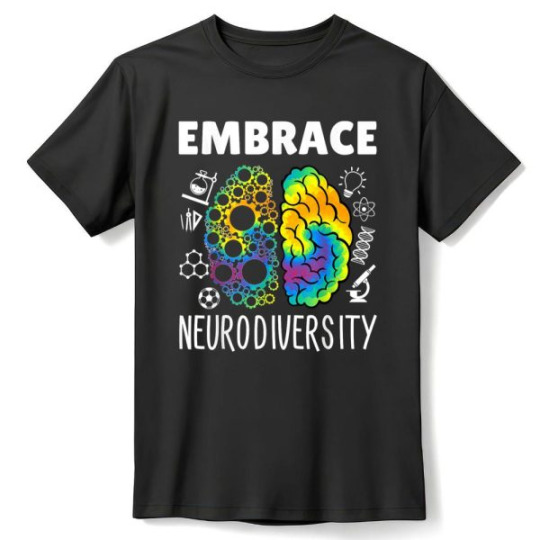
Buy now:19.95$
This perspective challenges traditional notions of "normal" brain function, recognizing that conditions like autism, ADHD, dyslexia, and others offer unique cognitive strengths and perspectives. By embracing neurodiversity, we acknowledge that these brain differences contribute to innovation, creativity, and problem-solving in ways that benefit society as a whole.
The concept of a "brain gift" emphasizes the positive aspects of neurodivergent thinking. For instance, individuals with autism may excel in pattern recognition and attention to detail, while those with ADHD often demonstrate remarkable creativity and out-of-the-box thinking. Dyslexic minds frequently possess strong spatial reasoning and narrative skills.

Buy now
Embracing neurodiversity means creating inclusive environments that accommodate various cognitive styles and support individuals in leveraging their unique strengths. This approach fosters a more diverse and dynamic society, where different ways of thinking and perceiving the world are valued and integrated.
By reframing neurological differences as gifts rather than disabilities, we open doors to new possibilities in education, employment, and social interaction. This shift in perspective promotes self-acceptance among neurodivergent individuals and encourages a more compassionate, understanding society that benefits from the full spectrum of human cognitive diversity.
Teacher gifts for men offer a thoughtful way to show appreciation for male educators who dedicate themselves to shaping young minds. These gifts can range from practical items that enhance their teaching experience to personal tokens that acknowledge their interests outside the classroom.

Buy now
Popular options include personalized stationery, high-quality pens, or desk organizers to support their daily tasks. For tech-savvy teachers, consider gadgets like smart pens or portable chargers. Book lovers might appreciate literary-themed gifts or gift cards to bookstores.
Practical items such as insulated travel mugs, comfortable ties, or stylish messenger bags can be both useful and thoughtful. For a personal touch, consider hobby-related gifts like sports memorabilia, gourmet coffee, or unique desk plants.
Remember, the best gift often reflects the teacher's individual personality and interests, showing that you value them not just as an educator, but as a person.
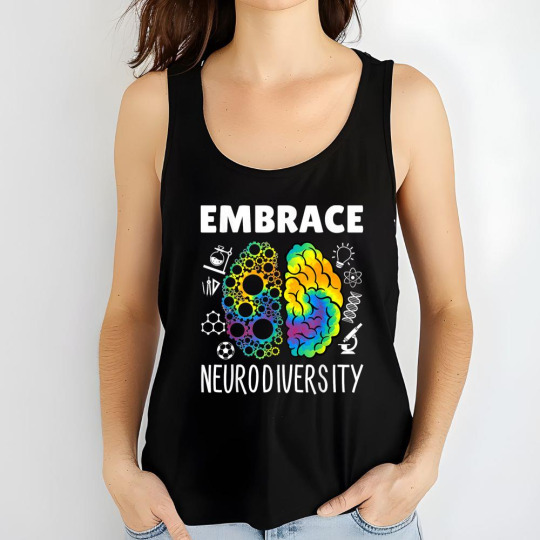
Buy now
Autism colors typically refer to the spectrum of hues associated with autism awareness and acceptance. The most recognizable is the autism awareness ribbon, featuring a puzzle piece pattern in bright, primary colors - red, yellow, and blue - on a white background. These vibrant colors symbolize the complexity and diversity of the autism spectrum.
Another significant color is gold, used to represent autism acceptance and neurodiversity. Light blue is often used for autism awareness, particularly on World Autism Awareness Day.
These colors serve to increase visibility, promote understanding, and celebrate the unique perspectives and abilities of individuals on the autism spectrum.
#NeurodiversityMatters#AtypicalMind#BrainGift#CognitiveFlexibility#DivergentThinking#EmbraceUniqueness#ExtraordinaryPotential#GiftedBrain#AutismAwareness#AutismAcceptance#AutismColors#AutismSpectrum#AutisticPride#Neurodiverse#SensoryProcessing#View all AUTISM GIFTS products: https://zizzlez.com/trending-topics/hobbies/autism-spectrum-awareness-month/#All products of the store: https://zizzlez.com/
0 notes
Text
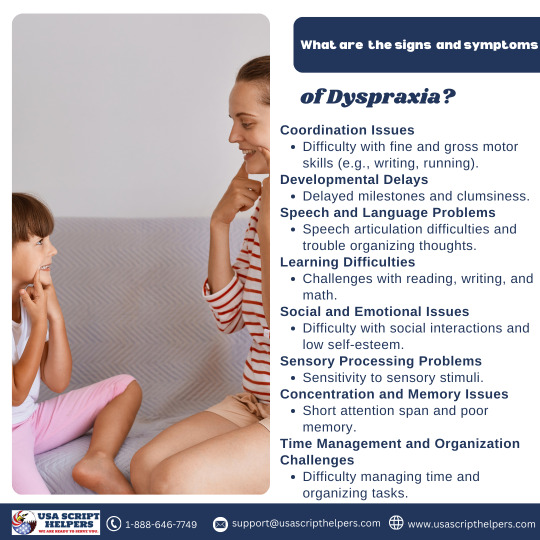
🔍 Struggling with coordination, speech, or social interactions? These could be signs of Dyspraxia. Learn more about the symptoms and how to support those affected. #DyspraxiaAwareness #CoordinationIssues #SpeechDifficulties #SensoryProcessing #LearningDisabilities #usascripthelpers
#DyspraxiaAwareness#CoordinationIssues#SpeechDifficulties#SensoryProcessing#LearningDisabilities#usascripthelpers
0 notes
Text
#OccupationalTherapy#FineMotorSkills#ChildDevelopment#SensoryProcessing#AdaptiveResponses#Autism#TherapeuticSupport#ChildTherapy#DevelopmentalSupport#MotorDevelopment
0 notes
Text
The Thalamus: Unreeling the Brain's Command Center

The Thalamus: Not the OS, But More Like a Central Router
In a computer, the operating system (OS) manages all software and hardware on the computer. It schedules tasks, efficiently manages computational resources, and facilitates user interaction with the system. While the thalamus does manage and direct information, it's not managing the brain's "software and hardware" in the full capacity that an OS would. Instead, a more accurate analogy would be to compare the thalamus to a central router or a network traffic controller within the brain's communication system.
The Thalamus: The Brain's Traffic Controller
Central Hub of Sensory Information Imagine your brain as the ultimate gaming setup, where the thalamus is the router, directing every bit of sensory input to its proper destination. It's like the central hub in a vast network, ensuring that signals from your eyes, ears, and skin are sent to the right places in your brain. Without the thalamus, your brain wouldn't be able to process that a puck has flown into the goal or that your favorite anime character just appeared on screen.
Master Regulator of Consciousness The thalamus doesn't just handle sensory data; it's like the power management system in your computer, determining when to wake up or go to sleep. By controlling this sleep-wake cycle, the thalamus acts like the system settings that switch your device from full brightness in gameplay to 'sleep mode' when it’s time to rest. This ensures you're alert when you need to be and helps you disconnect to recharge.
Enhancer of Memory and Learning Think of the thalamus as the save point in your favorite RPG. It works with the hippocampus — the memory storage in your brain — to turn your daily experiences into long-term memories. Just like saving your game progress, the thalamus helps encode new experiences so you can retrieve them later. Ever remember a scene from a manga or a game strategy days later? That's the thalamus at work!
Coordinator of Emotional Responses Your emotions are as varied as genres in manga and anime, from thrillers to romances. The thalamus connects to the limbic system, your brain's emotional heartland, to help you react appropriately to what you see and experience. It's like the emotion engine in a game, triggering a rush of adrenaline when you score a goal or a pang of sadness in a touching anime scene.
Architect of Smooth, Continuous Experience Just as a high-quality anime stream should be smooth and uninterrupted, the thalamus ensures your conscious experience is seamless. It links your moment-to-moment perceptions, much like a video buffer that ensures there's no lag or disruption in what you're watching or doing. This is why you can follow the puck in a fast-moving hockey game or get lost in the continuous story of a manga series without missing a beat.
Director of Your Dream World During REM sleep, the stage of sleep where you dream, the thalamus becomes the director of your own personal movie. It crafts vivid dream sequences that can be as bizarre and engaging as any anime adventure. These dreams are not just for entertainment; they help process emotions and solidify memories, like a recap or a filler episode that helps make sense of the main story.
The Brain's Resilience Builder Like the auto-update feature that improves your gaming experience, the thalamus supports neuroplasticity — your brain's ability to adapt and learn. After an injury or while learning a new skill, the thalamus helps rewire the brain, optimizing recovery and adaptation, ensuring that your brain remains as responsive and effective as the latest software update.
Why This Matters to You
Understanding the thalamus can change how we approach various brain disorders and everyday challenges. From treating insomnia and managing emotional responses to enhancing learning and memory, targeting the thalamus could lead to breakthrough treatments and improvements in cognitive health.
In Conclusion: Next time you dodge an opponent in a hockey game, enjoy a twist in your favorite manga, or recall a great anime episode, remember the thalamus. It’s the unsung hero behind the scenes, ensuring your brain's operations are as smooth and efficient as the best-designed games and stories. So, let’s give a nod to this powerhouse of the brain, powering up our experiences one moment at a time! 🧠🎮📚
#Neuroscience#BrainHealth#Thalamus#CognitiveScience#Consciousness#BrainFunction#MentalHealth#Neurology#SensoryProcessing#SleepResearch#Memory#Learning#EmotionalRegulation#Neuroplasticity#BrainAnatomy#NeuralNetworks#CognitiveNeuroscience#BrainScience#Psychology#NeuroResearch
0 notes
Text
Unleashing the Power of Play: The Numerous Benefits of Play-Based Pediatric Occupational Therapy
As pediatric occupational therapists, we know that children learn and develop through play. Play not only allows children to have fun, but it also helps them develop the skills they need for daily activities and function. This is why play-based Occupational Therapy (OT) has become a popular approach among therapists and parents alike as it offers a range of benefits for children. Let’s dive in deeper to explore some of the key benefits of play-based OT.
1. Improves Motor Skills
Play-based OT is a great way to improve a child's motor skills, including both gross and fine motor skills. By incorporating various activities into therapy sessions, such as building blocks, playing with playdough, catching and throwing a ball, or crawling under an obstacle course, children can improve their coordination, balance, and strength. This can help them with daily activities such as dressing, feeding, and writing.
2. Enhances Cognitive Skills
Play-based OT can also help children improve their cognitive skills such as problem-solving, planning, and organization. By engaging children in activities such as puzzles, memory games, and board games, children can improve their attention, memory, and processing skills. This can help them with school-related tasks like reading, writing, and math.
3. Boosts Self-Esteem
Play-based therapy can be an excellent way to boost a child's self-esteem and confidence. By providing a safe and supportive environment where they can be creative and explore different materials and activities, children can experience success and accomplishment. This can help them feel more confident in their abilities and encourage them to try new things.
4. Facilitates Socialization
Play-based therapy sessions also offer children the opportunity to socialize and interact with others, which is an essential aspect of their development. In group sessions, for example, children can learn how to share, take turns, and collaborate with others while engaging in different activities. This can also help children improve their communication skills and develop relationships with peers.
5. Customizable to Individual Needs
Play-based therapy is customizable to each child's unique needs. Play-based sessions can be tailored to target specific skills and areas of weakness, whether it's fine motor skills, sensory processing, or social skills. This way, each child can receive a personalized approach that meets their specific needs and goals.
#pediatricoccupationaltherapy#OTforchildren#sensoryprocessing#fineandgrossmotor#handwriting#feedingtherapy#autism#developmentaldelay#cognitiveimpairment#behavioraldisorders#ADHD#learningdisabilities#earlyintervention#sensoryintegration#visualperception#socialskills#motorplanning#selfregulation#assistivetechnology#schoolbasedOT#playtherapy#therapeuticinterventions#balanceandcoordination#mentalhealth#occupationaltherapygoals
1 note
·
View note
Text
be better
In a world that can often be unkind and divided, teaching your child to embrace everyone, regardless of their differences is a powerful lesson that will shape their character. Instilling the values of kindness and open-mindedness early on can lay a foundation for a future of compassion and acceptance. My 5-year-old daughter possesses a remarkable blend of qualities. Her diagnosis of ADHD, giftedness and sensory processing sensitivities definitely don't define her, but add to her uniqueness. Her giftedness, coupled with a nurturing nature, sets her apart, making her feel and behave older than her years. It's admirable how my daughter's assertiveness shines through, even though some may not fully understand her. Her eagerness to take care of others is something we encourage however, we've noticed that some children's parents struggle to understand her. My daughter can come across as "bossy" or like a "mother hen" but she honestly means well and just wants to take care of everyone. The infuriating part is that these same parents expect special care for their children who have their own quirks and diagnoses, but they refuse to extend the same understanding and compassion to my child. This has been incredibly challenging to navigate. It's through her interactions with others that she learns how to handle challenges and judgments with grace. One of the key lessons I'm trying to impart in her is that kindness isn't always a given, but it's a choice she can make every day. I remind her that not everyone understands the value of treating others with respect and empathy and when faced with unkind words or actions, we guide her towards being the bigger person and not allowing hurtful behavior to affect her heart. In the face of these situations, I try to draw from my own experiences of fighting hard to achieve my own place in life. My goal is not to make her immune to the world's negativity, but to equip her with the tools to rise above it. In my daily efforts, I've been hit by the realization that even adults can exhibit bullying behaviors, often fueled by their insecurities and jealousies. Together, we're exploring ways to counteract negative energies, while reinforcing the importance of self-worth and resilience. I also have to remind myself that it's important to find a balance between teaching her to be strong while acknowledging the very real and emotional toll it has been taking on me. I am exhausted by this situation, but she is my number one priority and I will continue to dedicate myself to encouraging her to continue to be unapologetically herself. And regardless of how tired I get, I will always stand up for the powerful, amazing, loving little babe I have done a damn good job raising. Kids are a product of their environment and my kid is one of the good ones.
#blogger#millennials#canada#sudbury#ontario#parenting#canadian#momsover30#borninthe80s#adhd#giftedness#spd#sensoryprocessing#bullying#adultbullies#childhoodbullying#adversity#bekind#selfworth#resilience#beyou#raisingkids#social interaction#child development#parents
0 notes
Text
All parents are requested to read.
All parents are requested to read. Every new parent and parent of a child with autism or ADHD or any other special needs child needs to know about this sensory processing. All children with autism will have sensory processing sensitivity, but not all children with sensory processing disorder are autistic. Many people think that sensory processing sensitivities are only available for children with…

View On WordPress
0 notes
Text
youtube
8 Powerful Traits Of Highly Sensitive People (HSP) You NEED To Know! 8 Powerful Traits of Highly Sensitive People (HSP) You NEED to Know! #highlysensitiveperson #hsp #emotionalintelligence Ever wondered why you feel emotions so deeply or get overwhelmed easily? If you’ve asked yourself this, you might be a Highly Sensitive Person (HSP). 🎤 I use the RODE Wireless ME mic for crisp, professional audio in my videos! Check it out here: https://amzn.to/4iLaGxK In this video, I dive into the 8 key traits that define high sensitivity and how understanding them can transform your life. Being highly sensitive isn’t a weakness, it’s a unique strength that allows you to connect deeply, feel empathy strongly, and experience the world in vivid detail. If you’ve ever felt drained by loud environments or deeply moved by art and emotions, this video is for you. Discover how to embrace your sensitivity with practical tips and find out why so many people share this beautiful trait. Whether you’re an HSP or just curious about the topic, these insights will help you thrive emotionally and socially. Join me on this journey of self-awareness and growth! 🔔𝐃𝐨𝐧'𝐭 𝐟𝐨𝐫𝐠𝐞𝐭 𝐭𝐨 𝐬𝐮𝐛𝐬𝐜𝐫𝐢𝐛𝐞 𝐭𝐨 𝐦𝐲 𝐜𝐡𝐚𝐧𝐧𝐞𝐥 𝐟𝐨𝐫 𝐦𝐨𝐫𝐞 𝐮𝐩𝐝𝐚𝐭𝐞𝐬. https://www.youtube.com/@MurisaStories/?sub_confirmation=1 🔗 Stay Connected With Me. Instagram: https://ift.tt/DNWMrAZ TikTok: https://ift.tt/S4qOyCb 📩 For business inquiries: [email protected] ============================= 🎬Suggested videos for you: ▶️ https://www.youtube.com/watch?v=uzoTSZU0AIs ▶️ https://www.youtube.com/watch?v=I8mtmp0FeH4 ▶️ https://www.youtube.com/watch?v=eTTxxAyoYlI ▶️ https://www.youtube.com/watch?v=MDwb0-uTYks ▶️ https://www.youtube.com/watch?v=9dNbPkhRkqo ================================= 🔎 Related Phrases: 8 Powerful Traits Of Highly Sensitive People (HSP) You NEED To Know, Traits Of Highly Sensitive People, Signs You Are Highly Sensitive, How To Know If You Are An Hsp, Highly Sensitive Person Traits Explained, What Does It Mean To Be Highly Sensitive, Coping With High Sensitivity, Highly Sensitive People And Emotions, Living As A Highly Sensitive Person, Benefits Of Being Highly Sensitive, Highly Sensitive Person Self-Care Tips, How To Embrace High Sensitivity #highlysensitiveperson #hsp #emotionalintelligence #selfawareness #mentalhealth #sensoryprocessing #personaldevelopment #mindfulness #empathy #emotionalwellness #selfcaretips #mentalhealthawareness #highsensitivity #introvertlife #emotionalstrength https://www.youtube.com/watch?v=K5dh-UIntZ0 via Murisa's Stories https://www.youtube.com/channel/UCC-WJlzTTKDAoFN77K-ARLg June 02, 2025 at 10:27PM
#mentalhealthjourney#healingtogether#anxietysupport#selfcaretips#emotionalwellness#mentalhealth#mentalhealthsupport#personalgrowth#Youtube
0 notes
Text
Hello. I’m struggling. 2/3
Here’s what I’ve started noticing around me:

👉 Sensory stuff: • “Normal” things can be overwhelming, painful, or just exhausting. For me, it’s the city noise — I used to love it, now it’s unbearable (I walk around with earplugs). Intense lights, like in shopping malls, are downright disgusting to me. • But then there are things like chips that burn my mouth, yet I keep eating them just for the crunch, the cat’s purring, textures of walls, fabrics — anything that catches my attention can be soothing.
👉 Social stuff: • Masking — I smile like everything’s fine, but inside I’m a raging beast. I always say hello and try to stay calm when someone yells at me. As a kid, I was a straight-A student with honors, but looking back I’m like, “What the hell was that for?!” • Processing conversations with delay. Often the meaning of some chat hits me only the next day. • Fear of being judged or misunderstood because I always heard “you’re weird,” but I’m just two legs and two hands — what’s weird about me? • Sometimes I crave contact, and sometimes I absolutely can’t stand it. Like, yeah, you go out with friends but after an hour I just wanna run away — but I force myself to stay ‘cause the girls still wanna hang out.
👉 Emotional stuff: • Huge mood swings. Problems with making decisions, not knowing what’s happening inside me emotionally, where the furious tsunami starts and ends? • Difficulty naming emotions but feeling them super deeply. As hell, I’m only learning this all over again after 20 years. • Emotional overload leading to meltdown or shutdown. I explode when someone takes it out on me. Then I puke my guts out and can’t do anything for half a day. Or I go silent and just stare at people I don’t even wanna talk to.
#artists on tumblr#cartoon#AuDHD#Neurodivergent#AutismAwareness#ADHDAwareness#MentalHealthJourney#Neuroatypical#AdultAutism#Masking#SensoryProcessing#EmotionalRegulation#Neurodiversity#TherapyJourney#SelfDiscovery#InvisibleDisability#MentalHealthMatters#neurodiverse stuff#actually neurodiverse#its the neurodivergency#autism#actually neurodivergent#actually autistic#asd#actually audhd#audhd problems#audhd things#audhd artist#actually adhd#adultMasking
5 notes
·
View notes
Video
youtube
Welcome to Phase 1 of our Autism Care Program at CAPAAR — Assessment. 🧠✨ | Capaar | Best Autism Centre in Bangalore
In this video, we walk you through how CAPAAR conducts a comprehensive initial assessment for children suspected of having autism. As the Best Autism Centre in Bangalore, our multidisciplinary team evaluates developmental, behavioral, and communication skills to understand each child’s unique strengths and challenges.
🔍 What to expect during the assessment:
✔️ Developmental milestones review
✔️ Parental input and observations
✔️ Standardized screening tools
✔️ Interaction and behavior evaluation
✔️ Next steps for diagnosis and therapy Early assessment is the first step towards empowering your child with the right support and intervention.
❤️ 📍 Hulimavu | Nobel Residency Road 📞 +91 98452 73273 🌐 www.capaar4autism.com
#CAPAAR #AutismAwareness #SensoryProcessing #UnderstandingAutism #Neurodiversity #AprilAwareness #SupportAutisticVoices #AutismAcceptance
0 notes
Text
youtube
Recent observations of exoplanet K2-18b sparked excitement with potential signs of life, but experts are divided over the validity of the data and methodology. The debate underscores the complexity of interpreting biosignatures in the search for extraterrestrial life.
New Scientists Awards
Nomination Link: https://newscientists.net/award-nomination/?ecategory=Awards&rcategory=Awardee
Web Visitors: https://newscientists.net/
For Enquiry: [email protected]
#sciencefather #scientist #scienceinnovation #researchexcellence #scientificbreakthrough #NewScientistsAwards #ColorectalCancer #CancerResearch #EarlyOnsetCancer #Microbiome #EnvironmentalHealth #ChildhoodHealth #CancerAwareness #MedicalStudy #Neuroscience #CognitiveScience #BrainResearch #SelfMotion #Perception #MindAndBrain #SensoryProcessing #Neurobiology
Get Connected Here:
=================
Twitter: https://x.com/awards67811
Instagram: https://www.instagram.com/afreen202564/
blogger: https://www.blogger.com/blog/posts/8014336030053733629?hl=en&tab=jj
Pinterest: https://in.pinterest.com/scienceawards/
1 note
·
View note
Video
youtube
How Your Brain Tells Pain from Itch! #sciencefather #neuroscience #cogni...
Researchers have discovered that the brain differentiates between pain and itch using distinct neural circuits. This breakthrough enhances our understanding of sensory processing and could lead to more targeted treatments for chronic pain and itch-related conditions.
#Neuroscience #BrainResearch #PainVsItch #SensoryProcessing #NeuralCircuits #MedicalBreakthrough #ChronicPain #ItchScience
__________________________________________________________________________________________________________________
MoreInfo:
Websiten link: https://neuroscientists.net/
Contact: [email protected]
Nomination link: https://neuroscientists.net/award-nomination/?ecategory=Awards&rcategory=Awardee ________________________________________________________________________________________________________________
Socialmedia:
Youtube: https://www.youtube.com/channel/UCZ9RPAjr0vKVJ91LUi4o4ig
Twitter: https://x.com/ScientistsNeuro
Pininterest: https://in.pinterest.com/neuroscientistsawards/
Linked in: https://www.linkedin.com/feed/
Instagram link: https://www.instagram.com/laramaria3040/
blogger:https://www.blogger.com/blog/posts/4217723762166
0 notes
Text
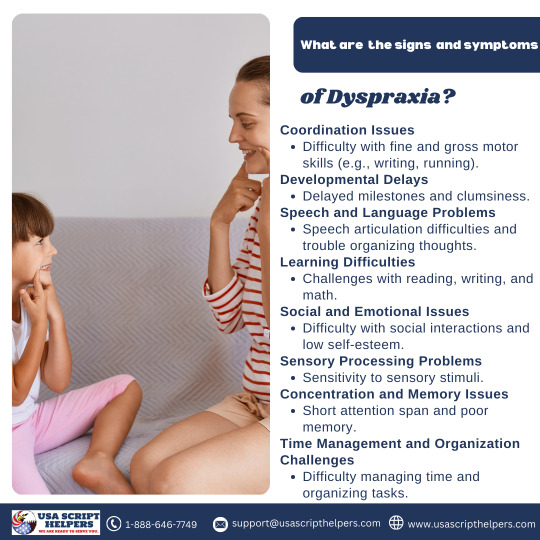
🔍 Struggling with coordination, speech, or social interactions? These could be signs of Dyspraxia. Learn more about the symptoms and how to support those affected.
#CoordinationIssues#DyspraxiaAwareness#SpeechDifficulties#SensoryProcessing#LearningDisabilities#usascripthelpers
0 notes
Text
Something that kept coming up recently was this question:
🖍 What accommodations have you made for yourself since finding out you're Autistic with ADHD?
I had to sit with this one for a while. For me, late diagnosis didn’t change everything overnight. I didn’t find a magic formula and suddenly thrive. But if I had to sum it up, my answer would be:
I live slower. Way slower.
Which sounds vague, but what it really means is that I started listening to my senses in a way I hadn’t before.
Losing my sense of smell meant I could no longer escape from other sensory overwhelm, so I had to make real changes—like choosing comfortable clothing instead of "acceptable" outfits or finally allowing myself to dim the lights when I needed to.
I had to acknowledge how certain food textures drain me, even though I don’t have allergies. My struggles with food are purely sensory, and accepting that was a game changer.
I also shifted my routines. Instead of forcing structure on myself out of strictness, I turned it into play. I let myself skip days or change things up without guilt—because rigidity was never going to work long-term.
But the hardest part? Letting go of “typical life” rules.
The ones that say: I have to XYZ. I should ABC. I have no choice…
That last one—"I have no choice"—is the biggest trap. Be brutally honest about everything you add to your life. Every activity, every person, every pet. Sensory “minuses” add up fast, and when you already have responsibilities you can’t shift, those energy drains will push you into overwhelm.
And here’s something else: Sounds can be a lifeline.
Music, mouth noises, playing with auditory stimulation—it can be a source of joy. But I also get that for some, sound is pure distress. That’s when noise-canceling headsets become a must.
When I need to process and spiral, I chat with an AI named Yana (it’s an app). Writing to someone who responds instantly, without judgment, helps me step out of loops. People are often too busy, too drained, or just not available to help us process—but having tools that support you without relying on others? That’s huge.
Overthinking is one of the biggest energy leaks we face.
So, if slowing down isn’t an option, lean into your senses.
Find rituals, music, textures, and small moments of play that bring you euphoria—because joy is what keeps us moving forward.
#ActuallyAutistic #ADHDAutism #SensoryProcessing #NeurodivergentLife #LateDiagnosis #AutisticAdult #AutismAcceptance #AuDHD #ExecutiveDysfunction #SensoryOverload #NeurodivergentJoy #MaskingFatigue #AutismAndADHD #ADHDProcessing #AutisticBurnout #SelfAccommodation #EnergyManagement #NDProcessing #NeurodivergentHealing #PlayfulRoutines
0 notes
Text

Sensory Processing...What is it? The brain takes in different sensory information from our body and the environment so that we can pay attention, plan, follow rules and directions and be organized. Some people have difficulty "filtering" the information and become focused on "unimportant" information, such as brightness of the lights, sound of air conditioner, feel of clothing, etc. Occupational Therapists, Teachers and other clinicians work to provide strategies to help people who have sensory processing dysfunction that impacts their ability to function and participate in their daily lives.
Check out our Sensory Processing Tee at our store!
www.otpassionproject.etsy.com https://otpassionprojects.myshopify.com/
#sensory#sensory processing disorder#sensoryprocessing#sensory processing issues#occupationaltherapist#occupationaltherapy#occupational therapist#cota#special education#teacher#occupationaltherapyassistant#socialworker#occupational therapy#physicaltherapy#rehabilitation#healthcare#education
22 notes
·
View notes